Dark Souls II‘s three expansions are a wonderful culmination of everything From Software has learned about making Souls games. And they should be considered essential playing for anyone who enjoyed the series so far.
These games tell a lot of stories, but there is a common thread, begun in the original Dark Souls expansion “Artorias of the Abyss” and now continued in “Crown of the Sunken King,” “Crown of the Old Iron King” and “Crown of the Ivory King.” It began with Manus, a being of dread power born from the ever-encroaching Abyss of darkness. He was defeated at the hands of a frail undead warrior, a pygmy that time eventually forgot, and shattered into uncounted fragments, each with its own destiny.
There are answers in Dark Souls, but they don’t matter as much as the playing.
As the pieces awoke they came to revile their own weakness and sought power to rectify it. One, in the guise of a queen, persuaded a great king to invade a distant land of giants and claim their flame. This was his undoing, but another depraved undead proved to be hers, and the fragment was destroyed with its goal just out of reach. That’s the core story in Dark Souls II.
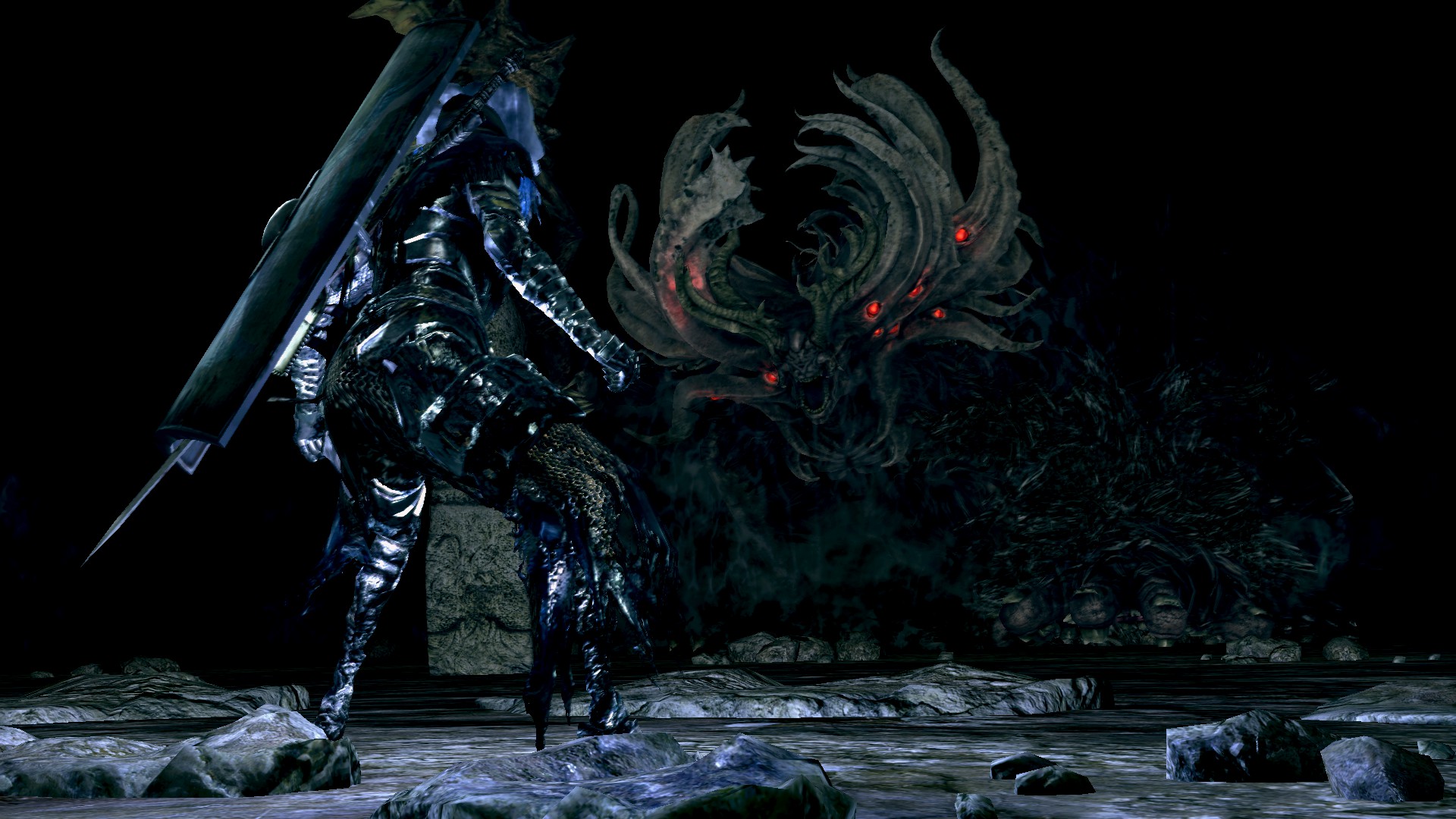
And it could have been the end of this particular thread, just one of the series’ many twisting, intersecting plots. But other fragments awoke, hungry for power, and they too sought succor with unwitting kings. That’s the basis for Dark Souls II‘s trilogy of king-themed expansions, three separate chunks of content that help connect many of the Dark Souls universe’s dots.
Adding new wrinkles to an existing story is always risky, but thankfully the “Crown” trilogy doesn’t elicit the same questions that, say, Shadow of Mordor, a new chapter in the thoroughly documented world of Tolkien’s Lord of the Rings, does: when did these events take place? How have I not heard about them before? Are they important in the grand scheme? There are answers in Dark Souls, but they don’t matter as much as the playing.
The events explored in the DLC could lie anywhere in the game’s timeline. They’re intertwined with the main story, but also significantly disconnected from it, both physically and narratively. You’re teleported into each new area, with little evidence that they exist in the same space — much less the same time — as the main game. The DLC can at first seem hopelessly separate.
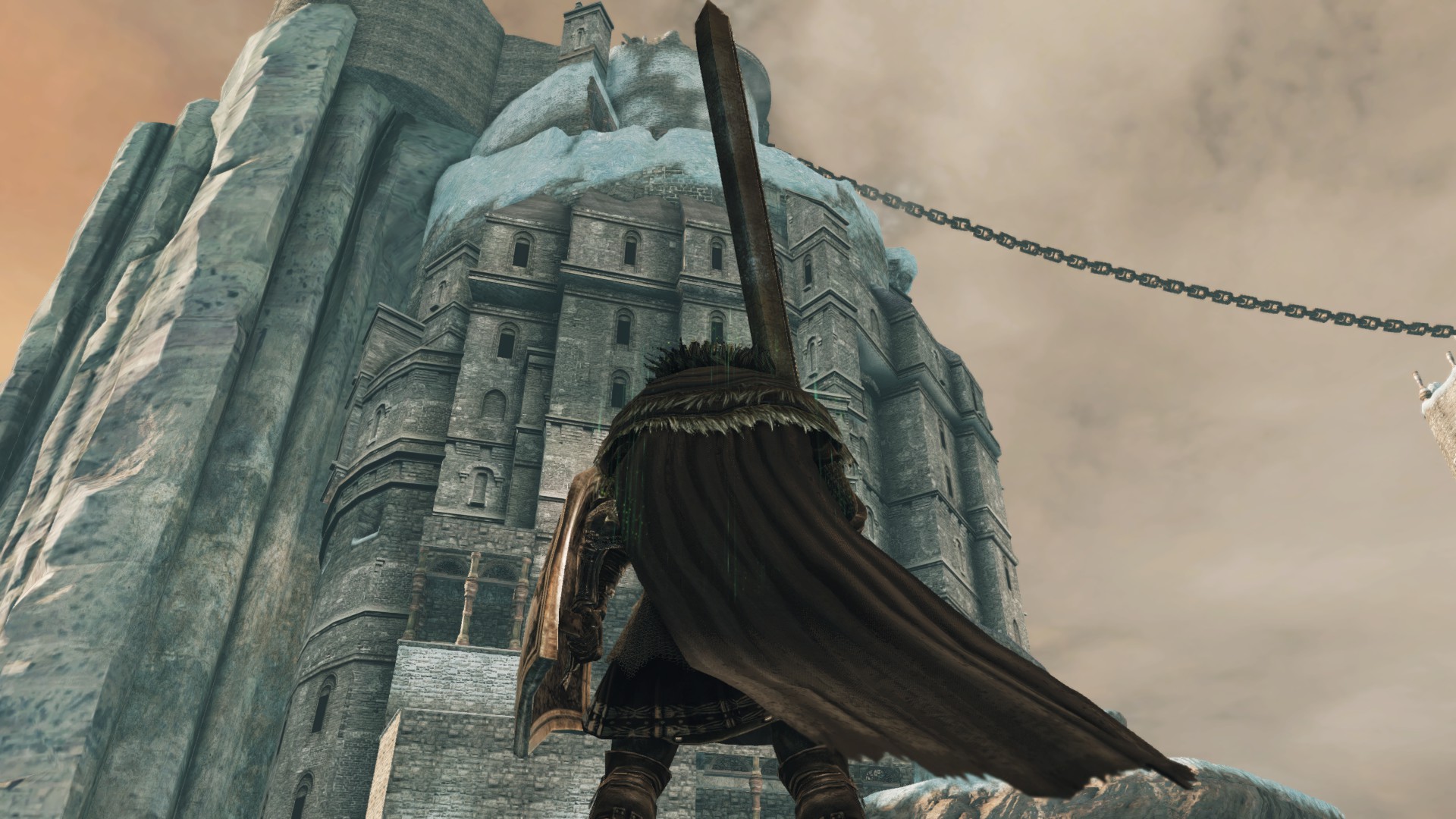
And it would be fine if that were the case. But if you delve far enough into the lands of the Sunken, Old Iron and Ivory kings, you’ll discover all the subtle ways they connect back to the series — like how three characters in the expansions are related to the final boss of the main game, or how the last fight in the third expansion takes place in the same arena as a boss fight in the first Dark Souls. And even if you don’t, these expansions still stand as some of the most challenging and well-designed adventures in the entire Souls saga.
Dark Souls II has proved divisive among fans of the first two games. Although apologists might stress that “different” isn’t necessarily “worse,” no one can deny that a lot changed in Dark Souls II. Chief among those changes is the world’s general layout. Where Demon’s Souls had several separate but detailed worlds, and the first Dark Souls was one giant, intricately designed ant hill, Dark Souls II is a sprawling, haphazard mess.
I believe this was a design choice — by letting players teleport between bonfires from the beginning, From freed themselves to craft larger, less cohesive environments. But the result is that the triumphant sense of discovery that occurred in Dark Souls every time you unearthed a new shortcut or alternate route is much rarer in its sequel.
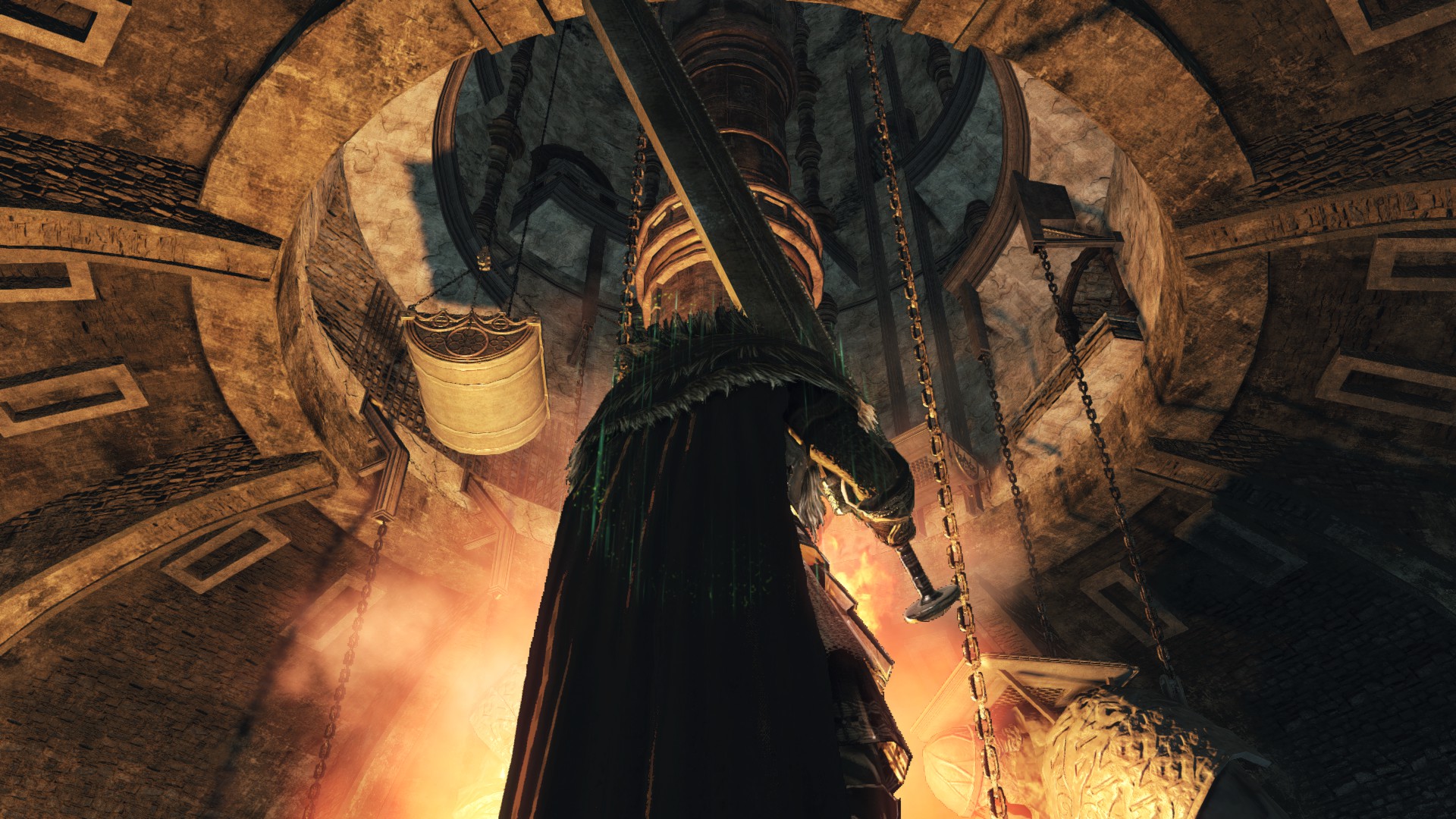
By introducing brand new mechanics, complex environmental puzzles and elaborate level design, these expansions feel like a response to that loss. The contrast between Dark Souls II and its DLC isn’t as severe as, say, Destiny‘s relationship with its high-level raid, the Vault of Glass, which is so drastically different from the main game that it almost feels like a separate entity. The “Crown” expansions are definitely cut from the same bloody, tattered cloth as Dark Souls II.
But they deviate massively from the formulas established in the series so far, and even experienced players will find their mettle tested in them. The level of detail in these areas is far greater than anything else in Dark Souls II, and the enemies are more varied and challenging, their wily behaviour frequently defying your expectations.
In the sunken city of Shulva, you’ll spend your time shooting arrows at well-hidden switches that raise and lower platforms and pillars. The massive iron Brume Tower is filled with locked doors and unique foes who lure you into deadly traps, not to mention some incredibly challenging bosses. And the snowy city of Eleum Loyce, despite having one of the silliest names of anything in this game, is one of the largest and most dynamic areas in the whole series, with a boss fight that is mechanically unique.
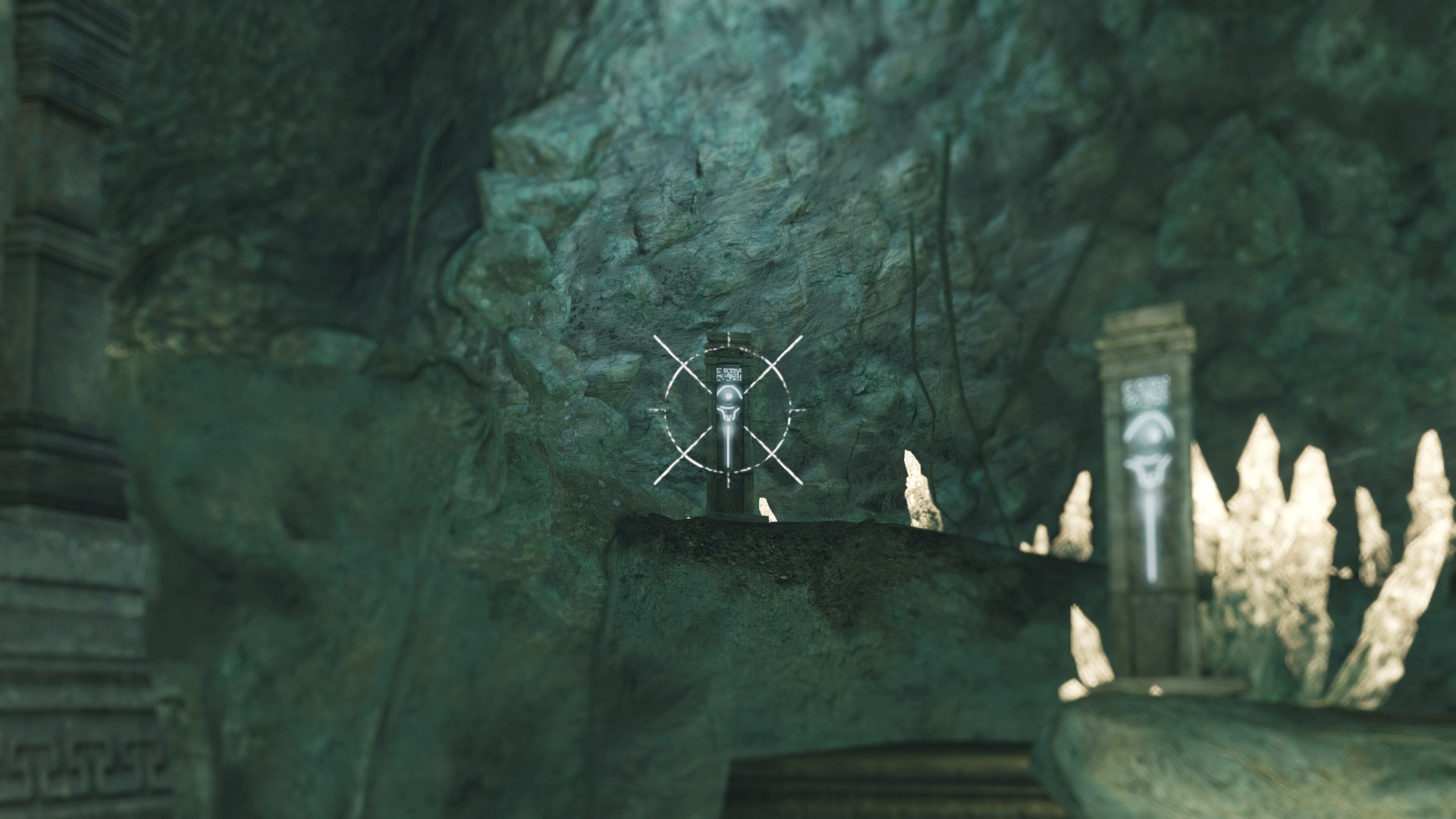
The new locations trick you with illusory walls, double back on themselves, and teem with secrets and traps. Hidden elevators take you back to a bonfire you visited two hours prior, while defeating a boss opens a new pathway in an area you conquered yesterday. You backtrack, sighing, but the world has been transformed — where a magical blizzard made enemies dormant before, clear skies have turned them anxious to lock blades with you. Or the path you’ve sought for three hours was right under your nose, just around a corner you hadn’t thought to explore. At least that time was well spent, since you discovered a half dozen secrets while you searched. That might be Dark Souls in a nutshell — or a part of it, at least.
The expansion levels may be the most difficult — and therefore, by Souls standards, the most fun — of any content this series has offered. But the ways their stories tie back into the lore of the previous games is also a huge incentive for experienced players to give them a go. It’s telling that Manus, a character introduced in the first Dark Souls‘ DLC, wound up being so pivotal to Dark Souls II‘s narrative — the evil queen, Nashandra, being a fragment of Manus’s broken soul. The “Crown” expansions introduce three other fragments, and their stories tie in with the main games as well.
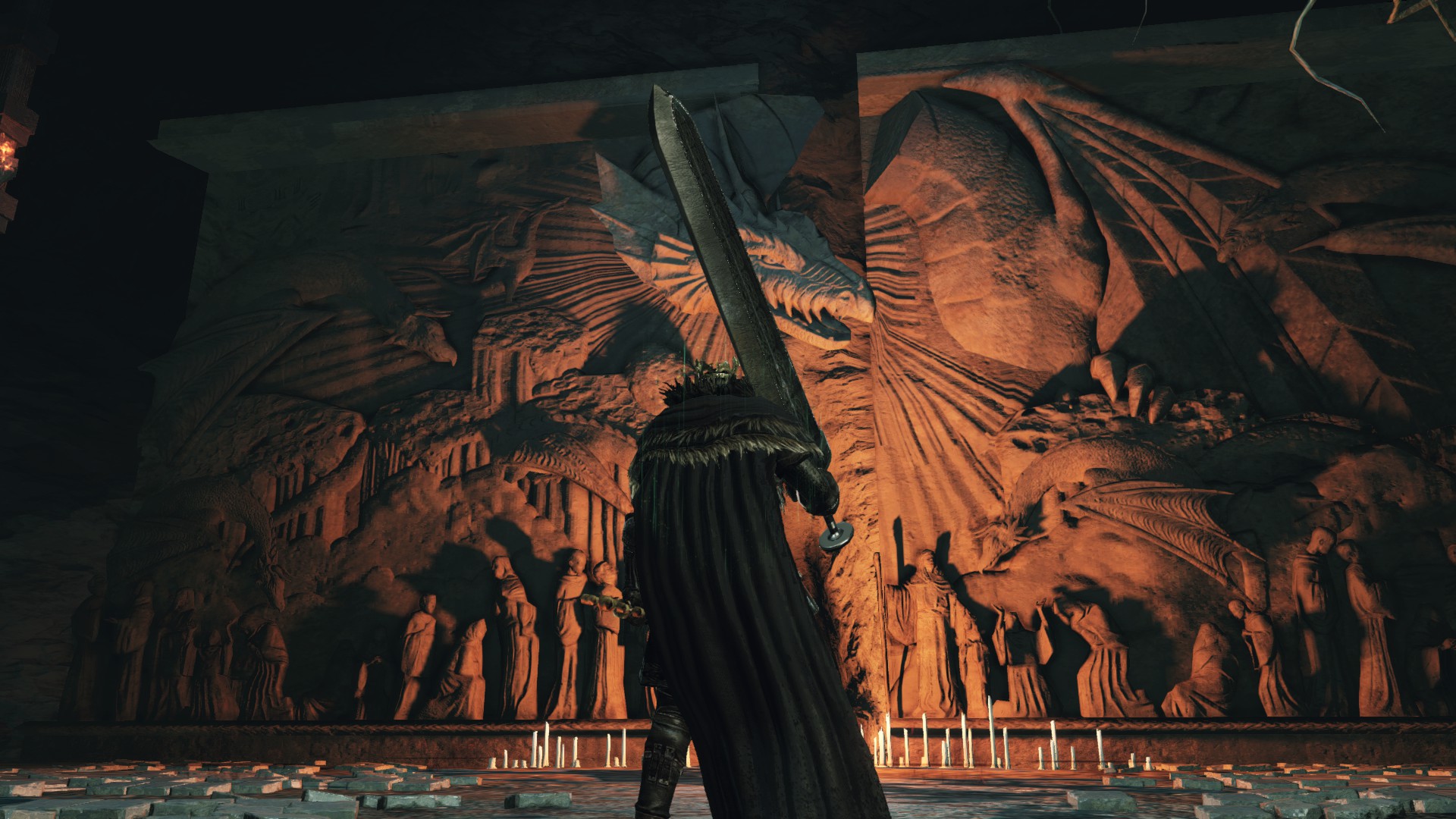
Try this: clues in the first DLC, “Crown of the Sunken King,” reveal that the various Manus fragments may have battled one another for power. Elana, the “Squalid Queen” of the sunken city Shulva and another piece of Manus’s soul, stands guard over a great dragon in the heart of her sanctum. Her king is nowhere to be found, having been killed long ago by an invading knight — Yorgh, a hero who appears to have been sent there by Vendrick to confront the dragon. Recall that Nashandra was always pulling Vendrick’s strings; did Nashandra convince Vendrick to send Yorgh to steal the dragon’s power from Elana, much as she sent Vendrick across the sea to war with giants?
You want to know more, and you probably never will, and that makes you want it even more.
In the second expansion, “Crown of the Old Iron King,” we learn a little more about the Old Iron King himself, a demon-like boss who sank beneath the lava near the main game’s Iron Keep level. It turns out Nadalia — a third Manus fragment — wasn’t responsible for the Iron King’s sad fate, although it would have been easy to assume she was, given her sisters’ track records. But by the time she arrived at the king’s Brume Tower, which we explore in this expansion, the king was long gone. In her grief or frustration she turned her soul to ash, but even in that reduced state she was able to entice one of Vendrick’s chief warriors — a character mentioned more than once in the main story — to stand guard over the kingdom she had claimed. Your battle with him is one hell of a fight.
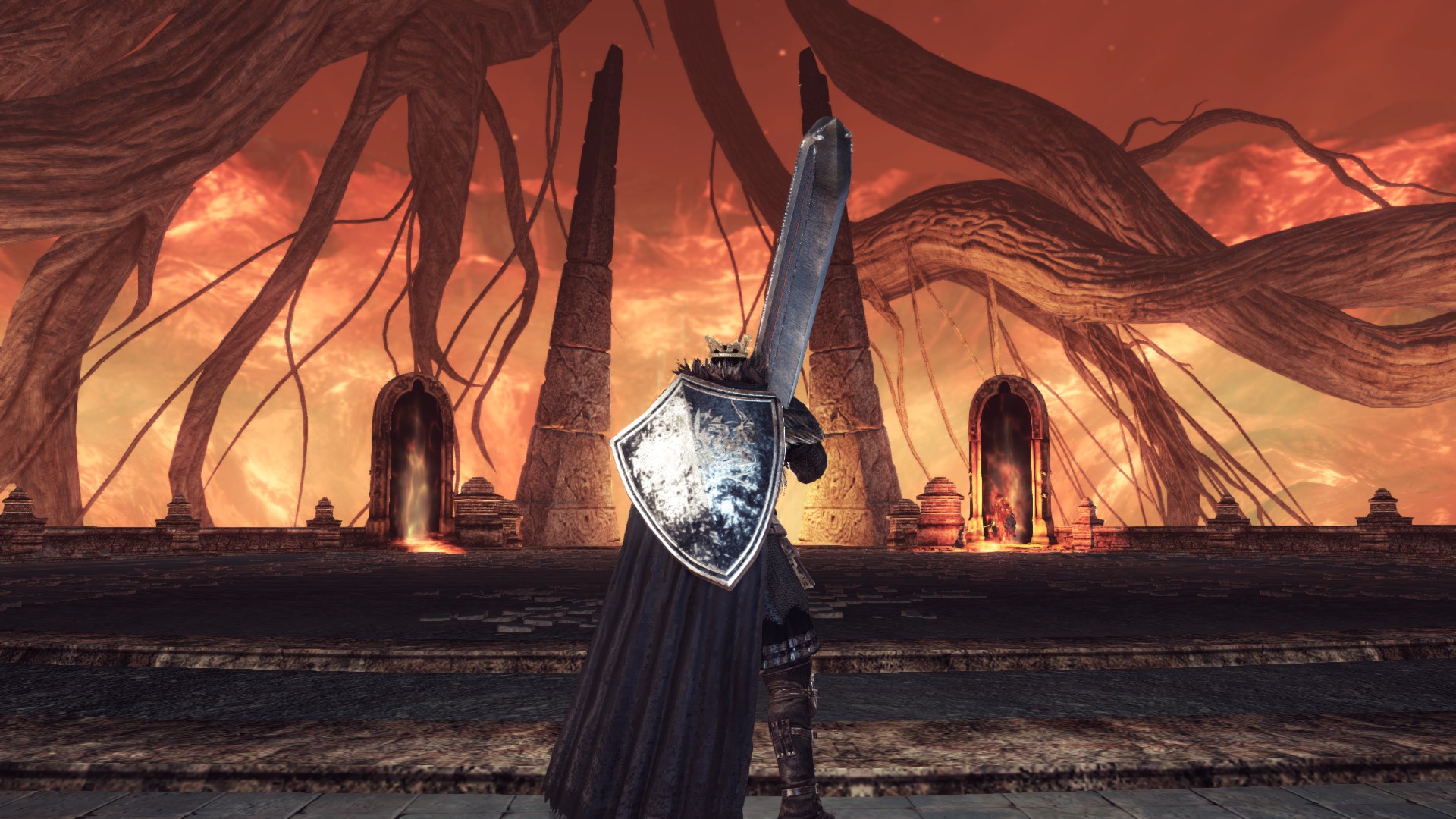
The third expansion, “Crown of the Ivory King,” is the most lore-intensive, having ties all the way back to the first Dark Souls. In Eleum Loyce, a spawn of Manus called Alsanna stands vigil where the Ivory King and his knights once sacrificed themselves to keep Chaos from consuming the city. We saw the birthplace of Chaos, a sentient force of fire and destruction, deep underground in the original Dark Souls, and it seems that same Bed of Chaos is where we defeat the Burnt Ivory King in this Dark Souls II expansion. Mind blown yet?
In some ways these stories are simple, though the manner in which they’re told — through sly nods and cryptic item descriptions, in typical Souls fashion — make them seem more complex and maybe more interesting than they actually are. They are legends half-glimpsed, appealing to players’ curiosity. You want to know more, and you probably never will, and that makes you want it even more.
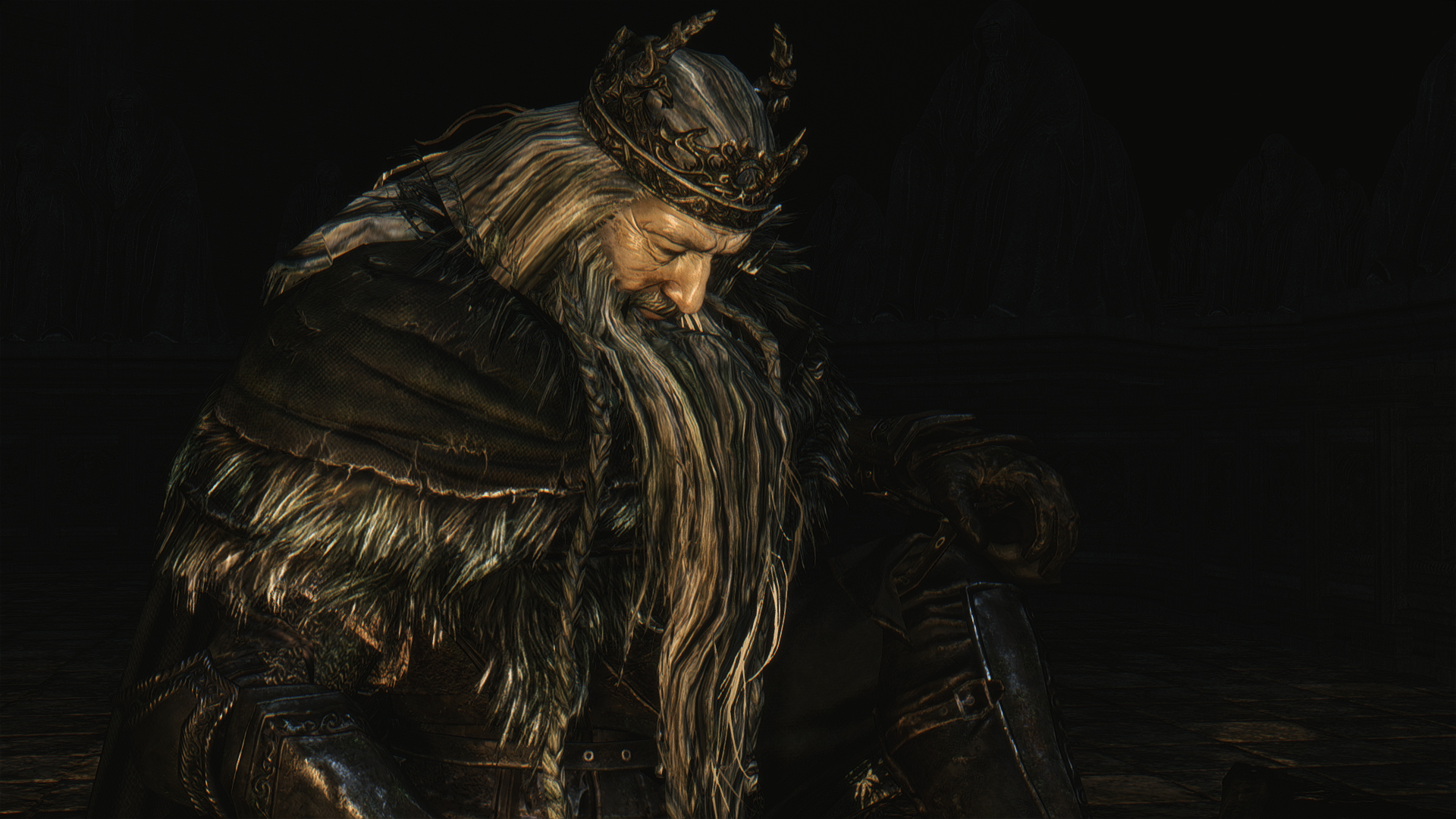
The crowns you obtain from Dark Souls II‘s expansions open the path to a new encounter with Vendrick himself, who in the vanilla game was only present in a hollow, zombie-like form. It’s just a short conversation, but speaking with the king himself, after all the hours spent battling his enemies and his minions, exploring his triumphs and his failures, and wondering at his fate, feels like talking to a god.
In truth he offers little of substance, confirming things we already knew and lamenting his own shortcomings. But he offers a gift, infusing the players’ new crowns with a blessing against death. They become wards against hollowing, the plague of all undead that saps their souls and humanity every time they die. That’s huge, but it’s no accident that you gain this unprecedented power only after you’ve completed Dark Souls II‘s three most challenging areas. You’ll probably be ready to start a new game by then, and when you do the crowns will revert back to normal.
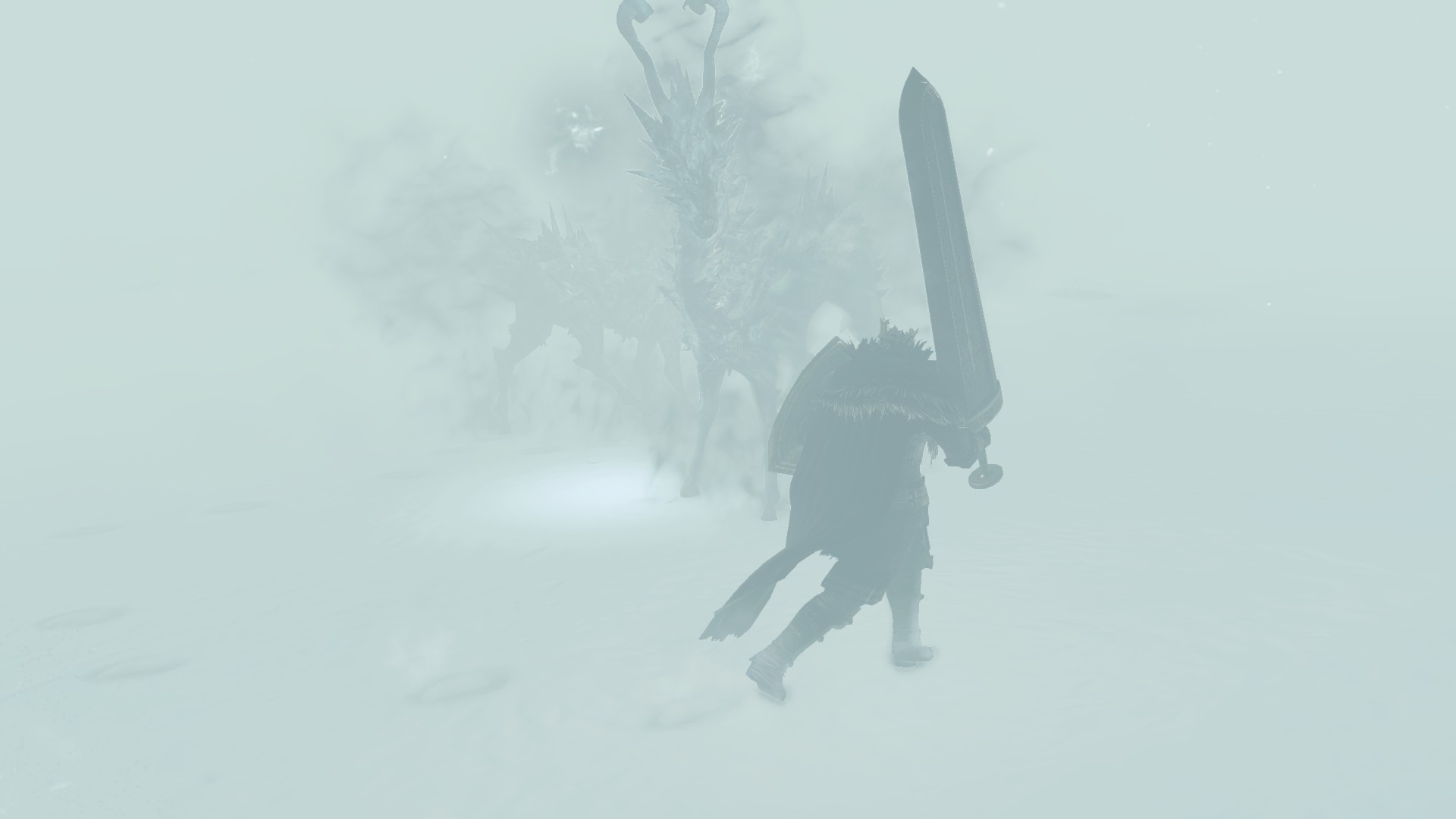
Fine! It’s the constant challenge and the sense that there’s always something new to discover, not the rewards themselves, that keep us playing these games, and in that sense the “Crown” trilogy is essential to the Dark Souls II experience. The DLC, rich with narrative and gameplay details, adds much that is worth discovering. Plus each includes an incredibly difficult optional area that makes the Shrine of Amana feel like Undead Burg.
These expansions are almost like the “Lost Levels” to the original Super Mario Bros. — adding unexpected wrinkles that twist and defy the rules of the game. I still haven’t beat the Frigid Outskirts, the third expansion’s optional challenge area, though not for lack of trying. And I’ll keep trying, until it too is just another notch in my chain mail. And then I’ll start all over again, eager with the knowledge that there will always be something new for me to discover in Dark Souls.
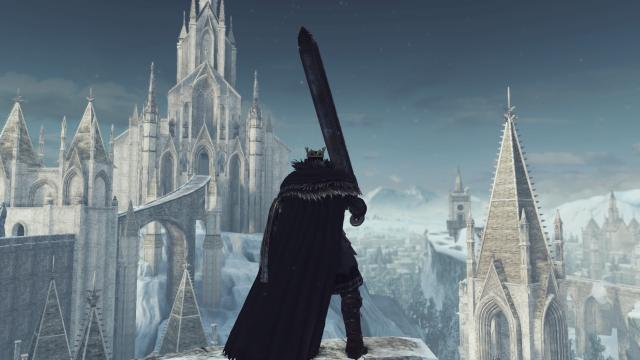
Comments
6 responses to “Dark Souls II’s DLC May Be The Peak Of The Whole Series”
I know I’m in a minority here, but I was quite impressed with the depth of the story in Dark Souls II. It was definitely harder to unearth than in Dark Souls, but that made it all the richer once details started locking together. The DLC sounds pretty awesome – will have to check it out one of these days.
Yeah I’m keen for this DLC after skimming through this! I indulged a little too much in DS and had enough by the time I got to the end of DS2, having not even finished most of the side stuff. But… kind of want to get into it again now!
I’m banking on there being a PS4 “Game of the year” edition with all the DLC included. It’s going to happen, right? Right!?!
Yes Batguy, it will happen. Prepare to Die Again edition hasn’t been released yet.
I’ve played the first one and I’ve just reached the bonfire on the second one, I must say the DLC is pretty good, and brings back a bit of the awe a Souls player experiences when they realize how the world is connected. Plus, even though my level was greater than 150, the new DLC wasn’t a walk in the park. I haven’t even beaten the optional boss yet, though I’ve cleared the path. Plus, the main boss of the Crown of the Sunken King is one of my favorite battles in the game. Imagine a sorcerer, forced to switch to melee for this DLC. I don’t know how to parry and riposte yet but backstabs are my bestfriend now. So yeah, if you like Dark Souls II, definitely get the DLCs.
Not saying anything controversial here but I didn’t like Dark Souls 2. It’s the game you’d get if a committee of people got together and read a book detailing a Dark Souls play through and made it from that having never actually played it. Everything is technically there, but it misses the whole point